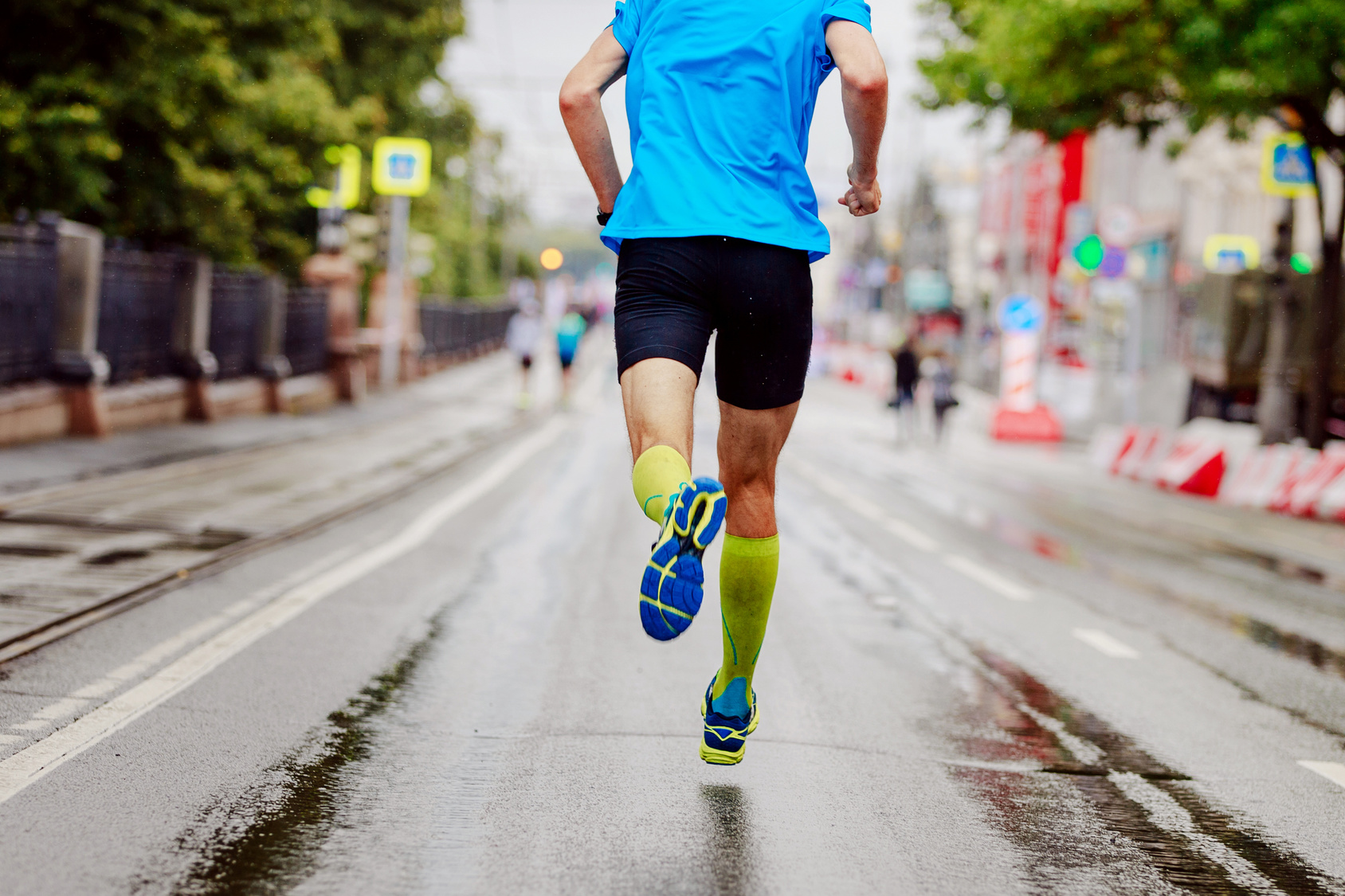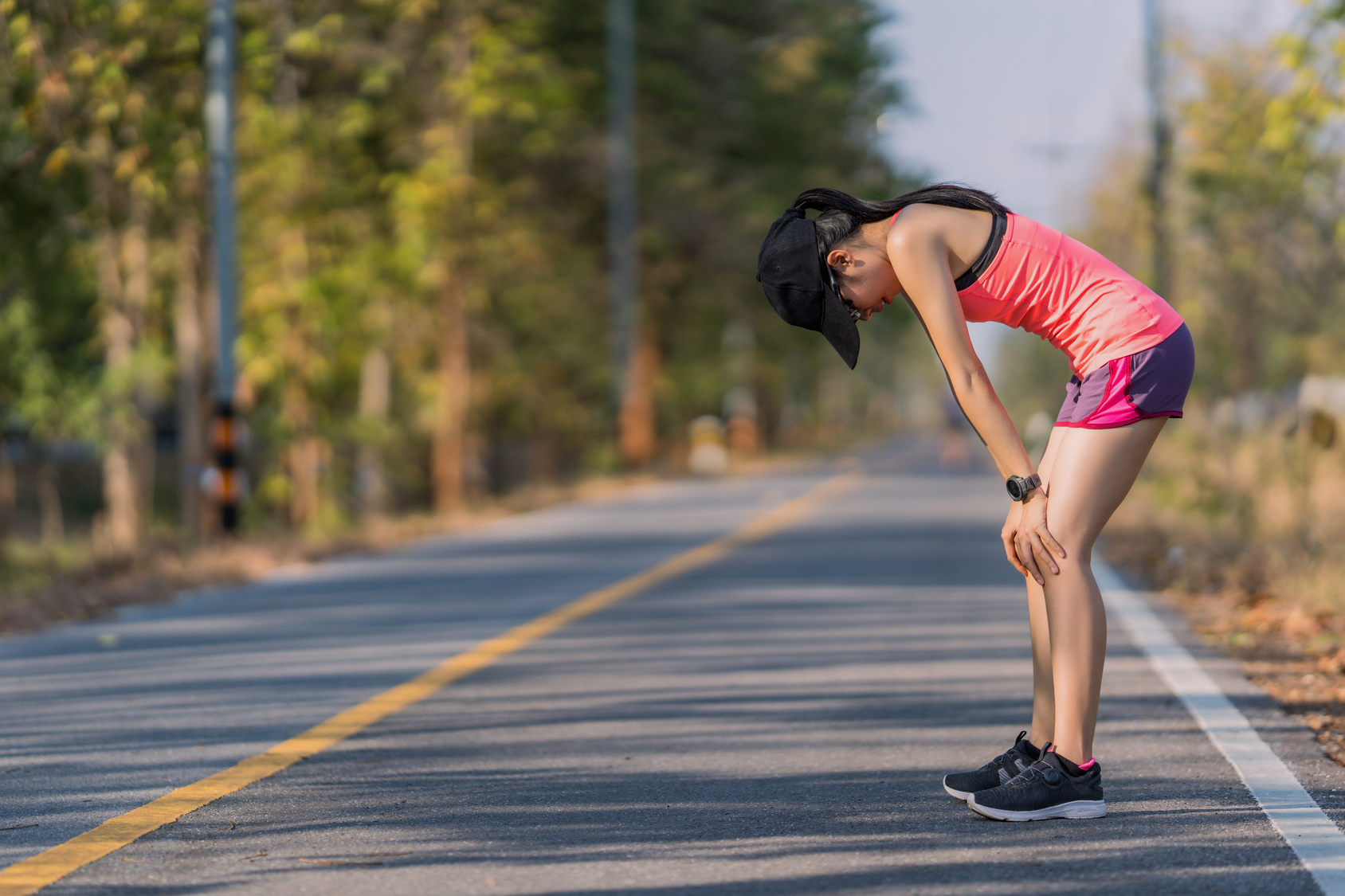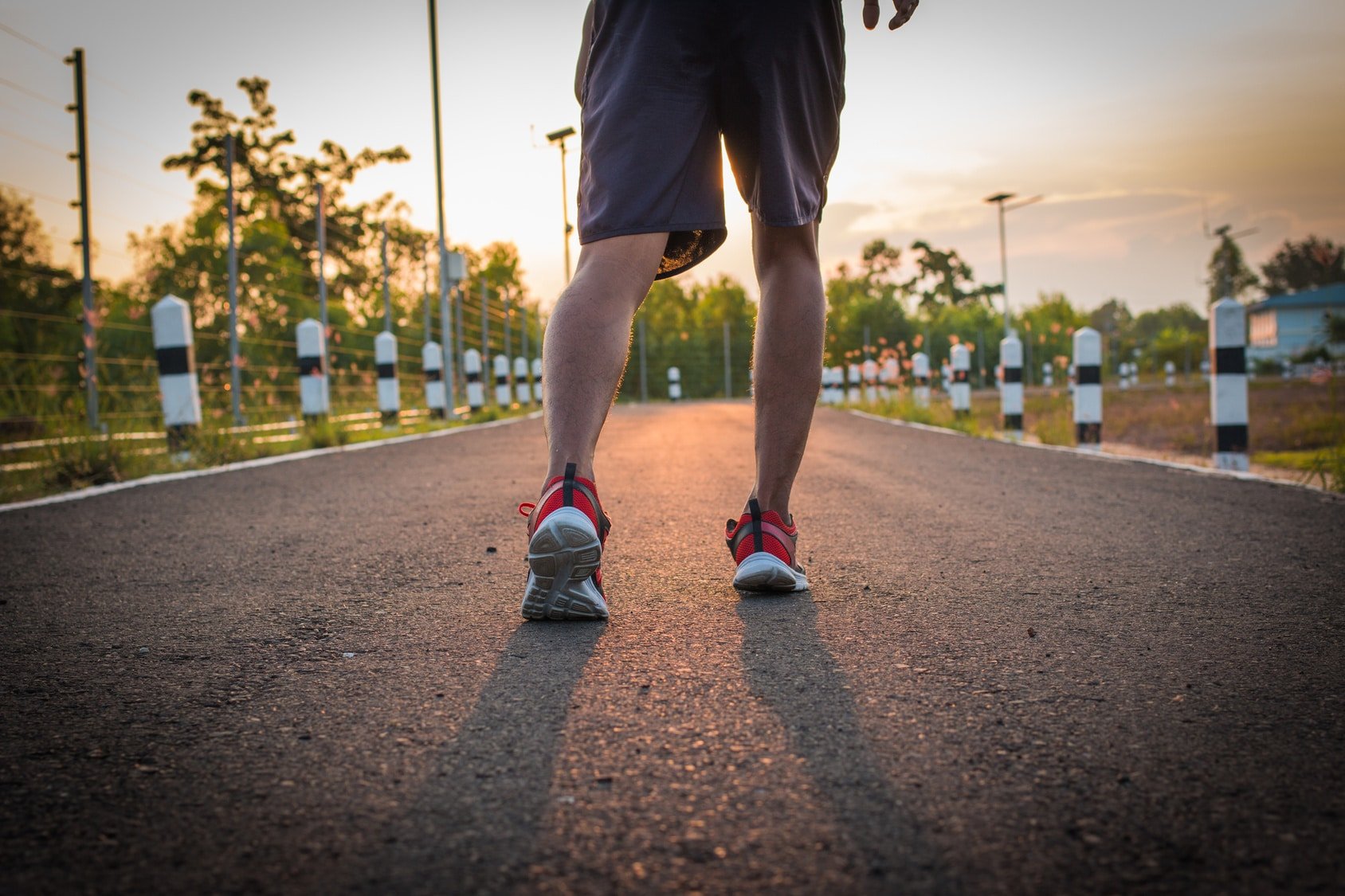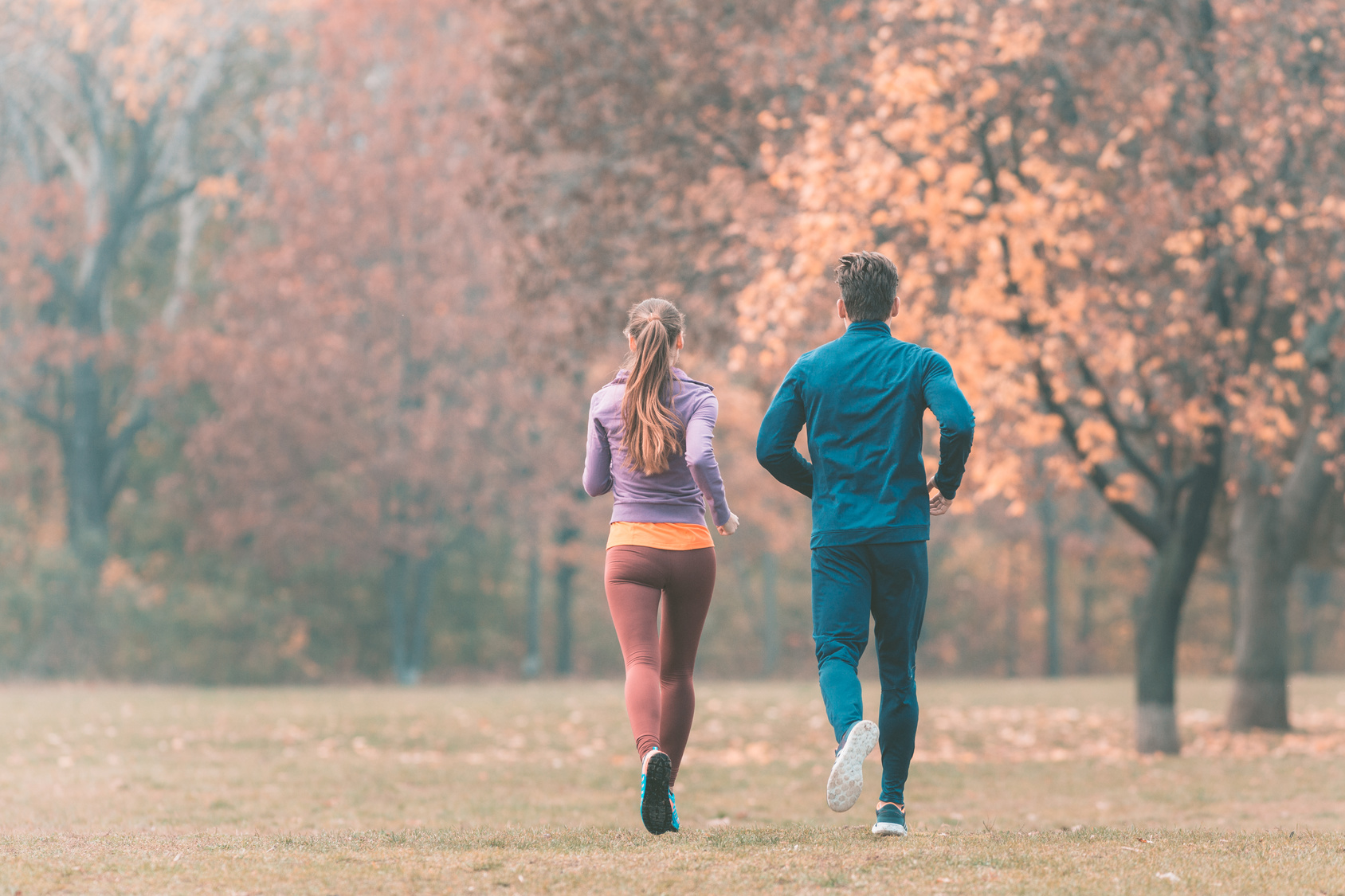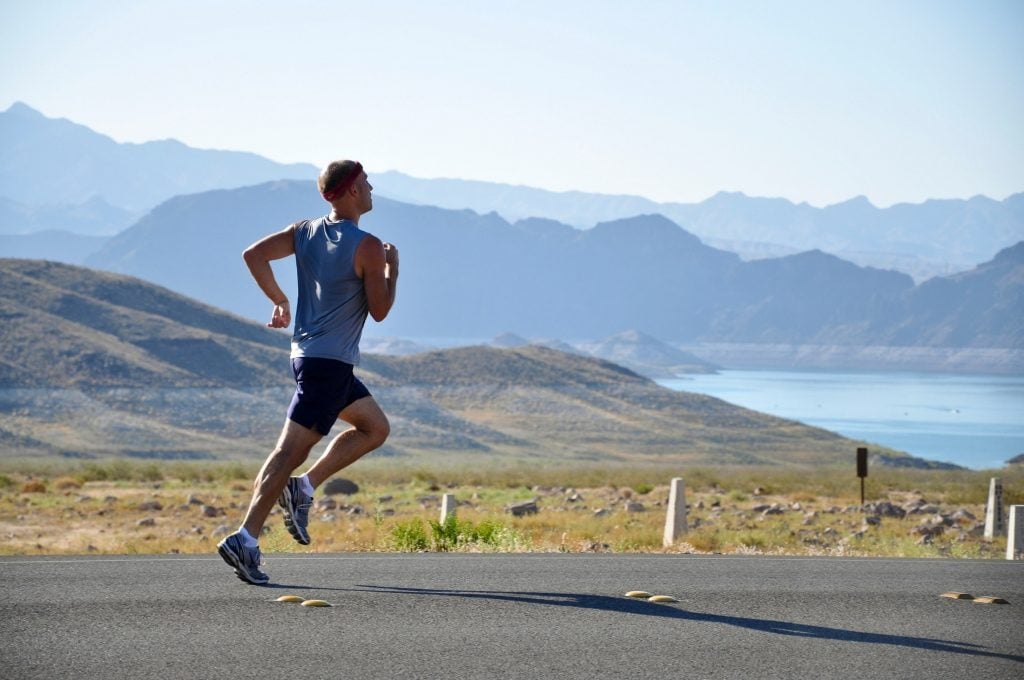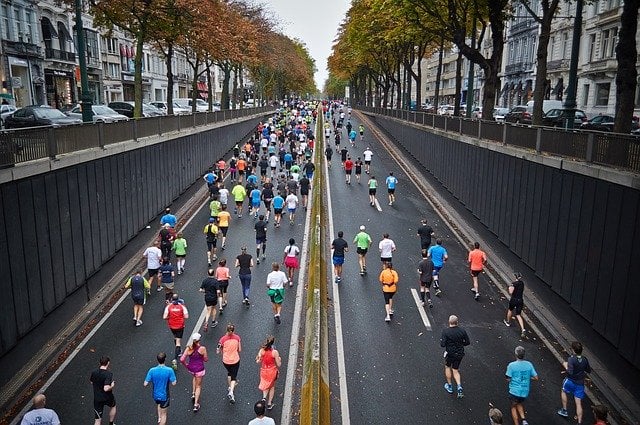Worried about the safety of running in the rain? Well, you’re in the right place!
Running in the rain can be quite an adventure, offering a change of pace and environment for runners who usually stick to clear skies.
But, it’s not all sunshine and rainbows. This exciting endeavor comes with its own unique set of challenges and concerns that might make some runners hesitate.
In this article, we’re diving into tips and strategies to address these concerns, ensuring that your rainy runs are not just enjoyable but safe too.
Sounds like a great deal?
Then let’s get started.
Is it Safe To Run In The Rain?
The answer is a resounding yes, as long as you’re not dealing with thunderstorms or extreme conditions like freezing temperatures or torrential downpours.
In fact, if you see lightning flashing in the sky or hear thunder rumbling in the distance, it’s time to call it a rain check (pun totally intended) and opt for indoor activities. Safety always comes first for us rain-loving runners! (Don’t worry; we’ll discuss this in more detail later.)
Potential Risks of Running in the Rain
While running in the rain can be a refreshing and exhilarating experience, you should also be aware of the risks. Let me explain some of the most common challenges that comes with running in wet conditions:
- Body temperature. The mix of rain, wind, and low temperatures can lead to hypothermia, a condition where the body loses heat faster than it can produce it. Early symptoms include shivering, numbness, fatigue, and loss of coordination. It’s essential to recognize these signs and seek warmth and shelter promptly.
- Slips and falls. Rain can make surfaces like sidewalks, roads, and trails slippery, increasing the risk of slips and falls. Puddles can also conceal potential hazards, such as uneven pavement or debris.
- Visibility Issues. Rain and fog can significantly lower visibility, making it difficult for runners to see obstacles or changes in terrain. It’s also harder for drivers to see runners.
- Chafing and Blisters. Wet clothing and shoes can increase friction against the skin, leading to chafing and blisters, especially in sensitive areas like underarms, inner thighs, and feet.
- Health issues. Running in the rain may raise specific health considerations, including the risk of catching a cold and taking care of your skin.
Will Running In The Rain Cause A Cold?
Let’s put an end to that age-old myth once and for all – running in the rain won’t give you a cold! Yes, you heard me right – the rain is innocent in this cold-catching conspiracy.
Here’s the deal: the reason why so many people fall sick during the cold months has nothing to do with running in the rain—or rain overall. It’s all about spending more time indoors, cooped up with others who might be carrying those pesky viruses.
Now, here’s a little catch – running in the cold weather itself won’t give you a cold either, but it might make you a tad more vulnerable to catching a virus.
When you’re out in the chilly weather, your body temperature drops a bit, and that might weaken your immune system’s defenses. But fear not! A strong immune system, coupled with good hygiene practices, will keep you running strong and healthy.
Benefits of Running in The Rain
Despite the challenges, running in the rain can offer unique benefits, ranging from mental health boosts to enhanced physical performance. Embracing the rain can transform a regular run into an exhilarating experience.
- Managing Adversity: When you face pouring rain and slippery surfaces head-on, you’re building resilience like a champ. So, when the real, harsh world throws obstacles your way, you’ll be more than ready to take them on!
- Burn More Calories: Research from the International Journal of Sports Medicine has shown that runners in rainy conditions exert more energy compared to those running in dry weather. Why? Well, the rain brings down the temperature, and that forces your body to work harder to stay warm.
- Reduce Stress: Rainy runs have a superpower when it comes to stress reduction. The soothing relief of those raindrops can lift your mood and transform your run into a soul-rejuvenating experience.
- Mood Boost: The sensory experience of rain – the sound, the smell of petrichor (the scent of rain on dry earth), and the feeling of raindrops – can be incredibly refreshing and uplifting.
- Connection with Nature: Running in the rain can deepen your connection with the outdoors, allowing you to experience the natural world in a different, more intimate way.
- Better Endurance: Cooler, rainy conditions can be beneficial for performance. Lower temperatures can reduce the risk of overheating, allowing you to maintain a steady pace for longer periods.
- Training for Race Day: If you’re joining a race, training in the rain prepares you for all types of weather conditions on race day.
When to Avoid Running in the Rain for Safety
Rainy runs can be invigorating, but there are times when it’s smarter to stay indoors or postpone your run.
I’ve had my fair share of encounters with erratic weather during my runs. One evening, I was all set to head out for a jog when I noticed ominous dark clouds looming in the sky. Living in an area known for sudden weather changes, I knew better than to take chances.
Despite my eagerness to run, I made the decision to stay indoors that day. It turned out to be a wise choice because, within minutes, a severe thunderstorm unleashed its fury. This was a crude reminder that there were times when it was smarter to stay indoors, no matter how passionate I was about running in the rain.
Safety should always come first, so here’s when you should consider avoiding that rainy jog:
- Thunderstorms: Running during a thunderstorm is a big no-no. The risk of lightning strikes is real, and you don’t want to be a lightning rod. If you hear thunder or see lightning, it’s best to postpone your run until it’s safe.
- Heavy Winds: Strong winds can turn your pleasant run into a challenging and potentially hazardous adventure. Those gusts can blow debris your way or even bring down branches.
- Extreme Cold and Rain: Running in cold, rainy conditions might sound tough, but it’s not always a smart move. Cold, wet conditions can increase the risk of hypothermia, especially if you’re not properly dressed for the occasion.
Remember, your safety is paramount. Be mindful of the weather conditions and always make sensible choices when deciding to run in the rain.
Choosing the Right Gear
Let’s talk gear, because when it comes to running in the rain, the right gear can make all the difference.
Here are some tips to ensure you make the most out of your rainy adventures:
- Waterproof Jackets: A waterproof or water-resistant jacket is key. Choose one that’s also breathable to prevent overheating. Features like taped seams, adjustable hoods, and vents can add comfort to your wet-weather run.
- Moisture-Wicking Fabrics: Don’t let the rain dampen your spirits – wear base layers that are moisture-wicking. These fabrics work hard to keep sweat away from your skin, reducing the risk of chafing and helping you stay warmer.
- Layering Strategies: Layering is the key to staying cozy and dry. The outer layer should be your rain protector, while the inner layers provide insulation. However, don’t go overboard with layers – your body will generate heat once you start running.
- Shoes with Good Grip: Keep your feet firmly planted on wet surfaces by choosing running shoes with excellent traction. You don’t want to be slipping and sliding during your rainy run. Some running shoes even come with waterproof uppers to keep your feet dry in light rain.
- Considerations for Puddles: If your route includes puddle hopping, consider shoes that drain well and dry quickly. While waterproof shoes are great, they can trap water inside, making your feet feel like they’re swimming. Not fun!
- Change of Shoes: If possible, be a rain-running pro by keeping an extra pair of dry shoes and socks ready for a post-run change. Your feet will thank you for this thoughtful gesture.
- Waterproof Cases or Bags: Protect your precious electronics – phone, music player, or any other gadgets – in waterproof cases or bags. Even in water-resistant jackets, pockets can get damp, and nobody wants a soggy smartphone.
Conclusion:
Rain running, with its unique blend of challenges and rewards, can be a delightful addition to your running routine. It requires preparation, caution, and the right mindset, but the payoff is immense.
From the physical benefits to the mental uplift, rain running can be a rejuvenating experience. So next time the skies open up, consider lacing up your running shoes and embracing the rain with confidence and joy!

